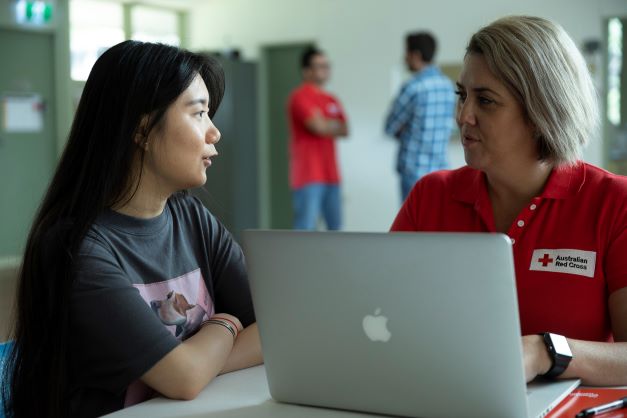
There is a long-standing challenge within the humanitarian sector – the slow process of onboarding and managing staff and volunteers for rapid deployment during a crisis. Australian Red Cross led an effort to solve this by establishing a verifiable digital credentials solution in order to remove some of the structural barriers and administrative burdens to onboarding.
The solution, Traverse, intended to offer a verified identity platform for the humanitarian sector that would address a gap in the market for an ethical, user-centric, portable, and secure platform. This decentralised, self-sovereign approach was selected because it was seen as a way to give users ownership over their own data and control over how credentials are shared, while making it easier for participating organisations to onboard staff and volunteers.
Despite producing a blockchain and verificable credential-based web and mobile application, Australian Red Cross closed Traverse in 2021 when it encountered a number of critical challenges. Although Traverse was shut down, it provides important lessons for Red Cross and the wider humanitarian sector on the use of blockchain and verifiable credential technologies, and how the sector may approach developing and adopting innovative technologies more broadly.
Key learnings and insights include:
1. The selection of technologies for humanitarian response needs to be assessed against technological maturity, ecosystem development, and the sector’s conservative risk appetite in deploying unproven technologies–especially in crisis contexts for vulnerable populations.
At present, blockchain and Web3 technological ecosystems are not sufficiently mature for the humanitarian sector to easily deploy at a system wide level. This is especially true for identification management, which revealed the importance of an enabling ecosystem and governance framework to support the use of verified credentials.
2. Humanitarian actors need to be clear about the expectations of different stakeholders’ particular roles and approaches to innovative technologies.
These roles can include innovative technology startups, users of innovative technologies, and actors in a wider humanitarian sector ecosystem. Australian Red Cross brought in different skill sets, perspectives and capabilities across sectors and stakeholders to the initiative, on the assumption it would lead to useful, ethical and responsible innovation. However, Red Cross was only able to understand the expectations and interests of critical roles after selecting a technology.
3. Humanitarian organisations need to understand the commitment required to develop innovative technologies and explore potential partnerships.
Despite mobilising over $750,000 in financial and pro bono support across corporate, humanitarian, government and philanthropic sectors, this was insufficient to support the long-term runway required to build the technology and the governance framework required to successfully deploy Traverse.
4. Innovation within an ecosystem of actors happens at the pace of the slowest mover.
While Traverse’s capacity for innovation was high and fast-paced, the humanitarian ecosystem had a far slower pace of development and adoption. It was also impacted by wider and more pressing organisational commitments, such as emergency responses and a global pandemic, which were prioritised over providing support and resourcing to Traverse.
5. The humanitarian sector focuses on addressing specific problems, therefore humanitarian innovation should be problem-led rather than solution-led.
This requires deep understanding and definition of the problem itself as a precursor to any technological innovation or application–and may mean that the most appropriate solution, especially when dealing with vulnerable populations, might involve basic technologies (such as pen and paper) rather than cutting-edge technologies.
Most stakeholders involved in Traverse continue to believe in the potential for blockchain technology and verifiable credentials, but feel it is around three to five years’ away from being able to be widely used and recognised across the humanitarian sector.
Traverse highlighted that the resources required to develop and maintain blockchain technology are too high for many humanitarian actors, such as Red Cross, however humanitarian organisations might address this challenge by focusing on partnerships with companies that already have technological capabilities and utilise their expertise.
To make the most of such partnerships, humanitarian organisations must build their knowledge and capabilities to be an informed procurer of technology partners, technology products and services. This would enable innovative technological applications to safely and ethically support humanitarian work to meet the needs of the people and communities being served.
Read the Traverse case study.


